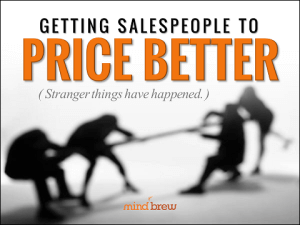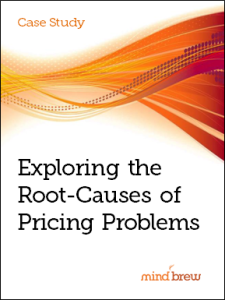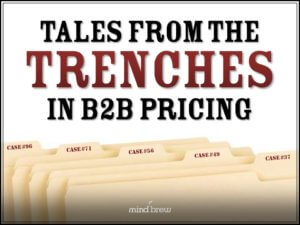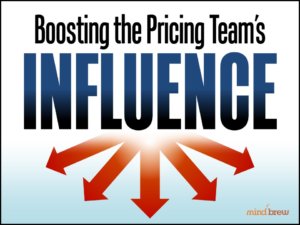You might never have heard of “normalization of deviance” before, but if you’re on a B2B pricing team, normalization of deviance is one of the biggest threats to your effectiveness in your organization.
Despite how it sounds, “normalization of deviance” doesn’t have anything to do with old folks lamenting the number of young people with tattoos and piercings. Sociologist Diane Vaughan explains the concept this way: “Social normalization of deviance means that people within the organization become so much accustomed to a deviant behavior that they don’t consider it as deviant, despite the fact that they far exceed their own rules for the elementary safety.”
I got to witness normalization of deviance firsthand once when I was touring the control tower at a major airport. Throughout my visit, a loud alarm sounded with disturbing frequency. When I asked what it was, one of the controllers told me, “That’s the aircraft proximity alarm that goes off when planes are on a converging course. But it’s way too sensitive, so we just ignore it.”
Now, anyone who has read the story of The Boy Who Cried Wolf as a child can see the obvious problem with this scenario. Eventually, a real wolf shows up — or in this case, the warning sounds when planes are actually about to collide — and everyone ignores the alert.
Vaughan has documented numerous situations where the normalization of deviations resulted in terrible consequences for organizations — like the design of the O-rings on the space shuttle Challenger and the crash of the Costa Concordia.
Unfortunately, we humans rarely learn from other people’s past mistakes. Instead, we seem to perpetuate them.
Normalization of deviance often shows up in B2B settings when salespeople ignore the guidance from pricing. They rationalize their decisions by saying that they will lose the deal unless they break the rules. And after all, they are only looking out for their customers.
Over time, however, they get so much in the habit of breaking the rules that it becomes part of the corporate culture. And when new people join the organization, they learn from the example of the veterans and break the rules in the very same ways.
But you don’t have to accept this behavior. You can break the cycle, but it will require a careful strategy and implementation of that strategy.
Our natural inclination is to point a finger at the sales department. After all, if they would only follow the rules, you wouldn’t have this problem.
However, those kind of accusations are usually counter-productive. Blaming other people (even if it’s their fault) just makes them defensive.
A better approach is to acknowledge that this is a common problem in many organizations. Letting people off the hook for past misdeeds makes it easier to start fresh — and then you can start the process of (re)educating your company about the importance of pricing.
We have several resources that can help with this education process. Getting Your Salespeople to Price Better lays out some strategies that other B2B pricing teams have used successfully to help improve their pricing. How to Prevent Margin Meltdowns in the Field offers seven “plays,” things you can do to improve compliance with your pricing guidelines. Exploring the Root-Causes of Pricing Problems takes a deeper dive into some of the reasons why pricing strategies fall short of goals. Tales from the Trenches in B2B Pricing looks at 10 real-world case studies, including several that offer tips about handling organizational dynamics, and Boosting the Pricing Team’s Influence explains how improving your team’s reputation within your company can make it easier to accomplish your objectives.
Normalization of deviance is a significant problem for many B2B firms. But you don’t have to put up with the status quo. Start taking steps today to help your company stick to its pricing targets and improve its bottom-line results.


















